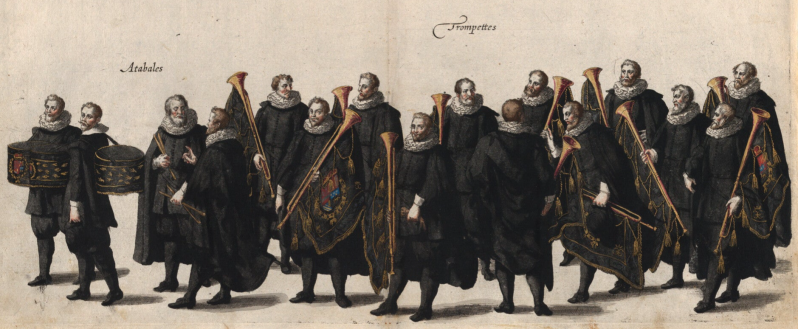Gunther Cogen (°1963) is a Flemish instrument maker who immerses himself in and focuses on the construction of the natural trumpet. He works from a compact workshop in Temse, and mainly builds the tromba, trumpets as they were in use at the time of Johann Sebastian Bach. In line with the Historical Informed Performance Praxis, he is convinced that there is still an unemployed potential waiting from the instruments themselves, to help us understand the music of the time even better. The (re)discovery of the rich 17th century repertoire from the Golden Age with the pronounced symbolism of the trumpet. But also the knowledge and use of articulation techniques with a natural vocal use of the natural harmonics, in a correct balance with tempo and ornamentation. Building historical instruments locally and making them available can help support this vision and movement. His project is based on 3 fundamental pillars: build-study-play !

HISTORY & VISION
The Tromba or Clarino, known today as the natural trumpet, is part of the heritage! For a period of almost three centuries, this instrument was an integral part of European musical life. Originally as a signalling instrument in a military or urban context, in the Golden Age it held a ceremonial function that expressed the absolute power of the monarchs, and which later transformed into a divine symbolism in religious music. Nuremberg was the most prominent center of trumpet building. The Schnitzer, Haas and Ehe dynasties dominated trumpet making with instruments of exceptional quality over several generations. Their instruments can be found all over Europe and are now considered the standard in historically informed construction methods.
Clarke 'Ecossaise'
Rameau 'Air de Triomphe'


As a contemporary builder, I am indebted to the pre-industrial Nuremberg tradition! The acoustic ideal of these instruments follows from the materials used, the geometry and the construction technique of the time, without striving for the 'replica'. Tubes and bells are shaped, braced, driven and hammered entirely by hand from thin brass plate, with the material tempering being the ultimate craftsmanship with the resulting sonority and rich overtone timbre. Ornaments and decorations in the form of casting, embossing and engraving not only place these trumpets in their historical context, but also elevate them to an artistic object, thus appealing not only to academics and musicians but also to collectors.
Through a traditional construction process, each instrument is unique with a distinct character and personality!

Starting from the historically informed practice, there is a growing demand for the accurate reconstruction of the musical instruments of the time. Building these trumpets today presents us with pertinent questions and challenges: what about the geometry, the materials used and the construction technique in function of the intended sound idiom and the final playing behaviour? As a contemporary builder, I have to be constantly aware of the technological insights and possibilities of the time, and to respect and apply them, including their limitations! This building vision offers opportunities for a compact workshop, in which the old craftmanship represents an added value compared to a semi-industrial construction method.


https://open.spotify.com/episode/4z7nxQQ37CZgvXPvXANoCa
THE OWL OF MINERVA
A podcast about philosophy and occasionally culture
Invited by Johan Geerts in his philosophical podcast format, we talked about the enigmatic natural trumpet.
The culture and tradition of the trumpet.
Identity, historical temperament and physics.
Symbolism during the time of European Absolutism; Golden Age.
Perception of the tromba in our modern era.
Renaissance of the natural tonality HIPP 2.0
It was a pleasure to be a guest at Minerva’s Owl!

